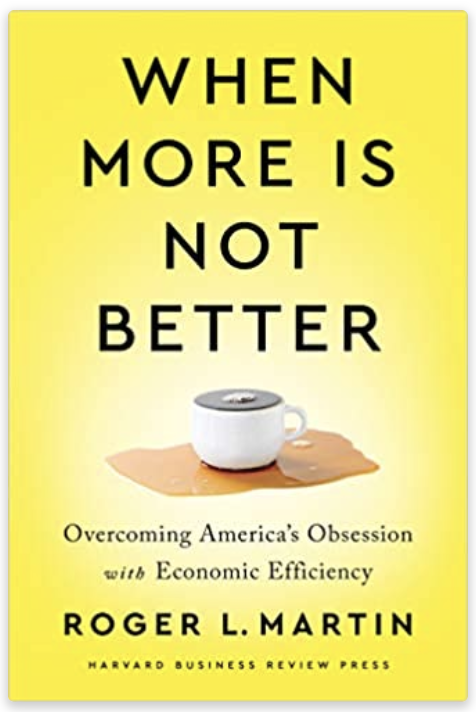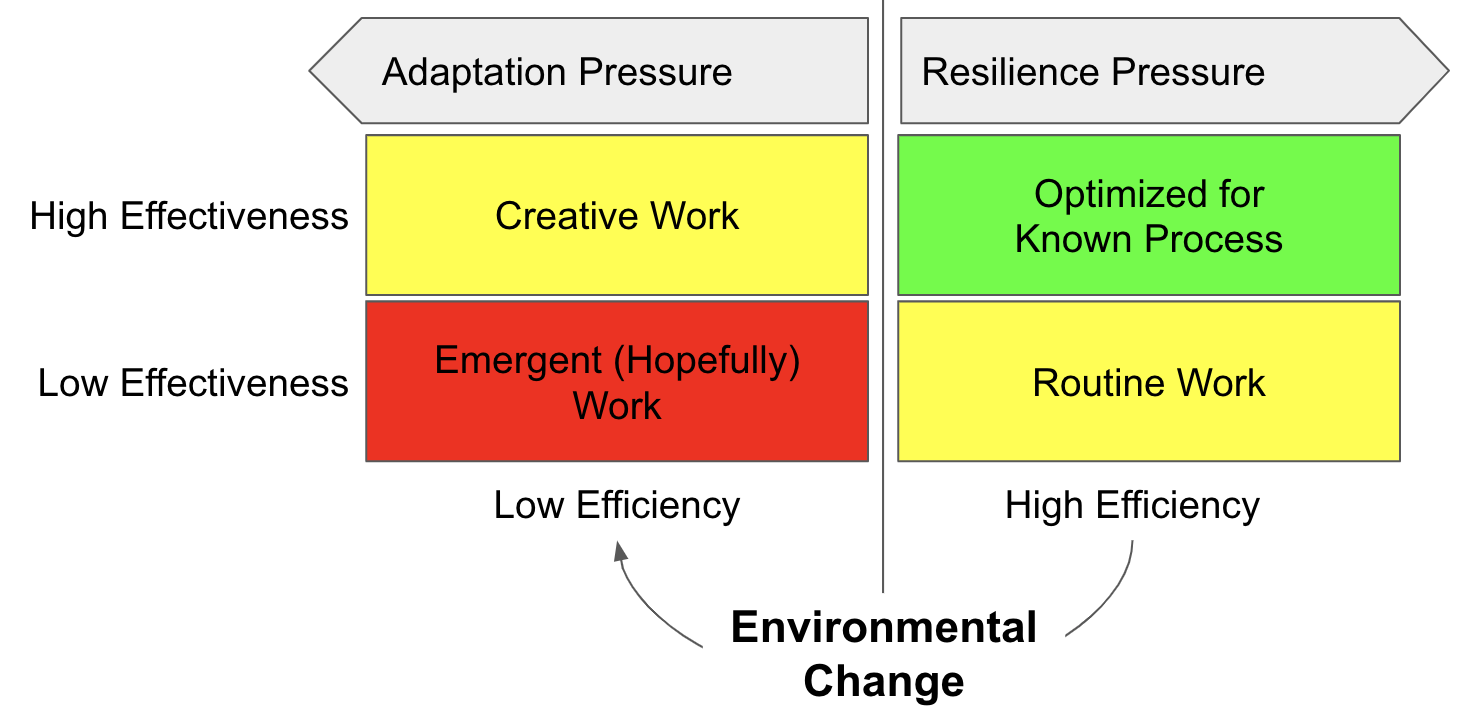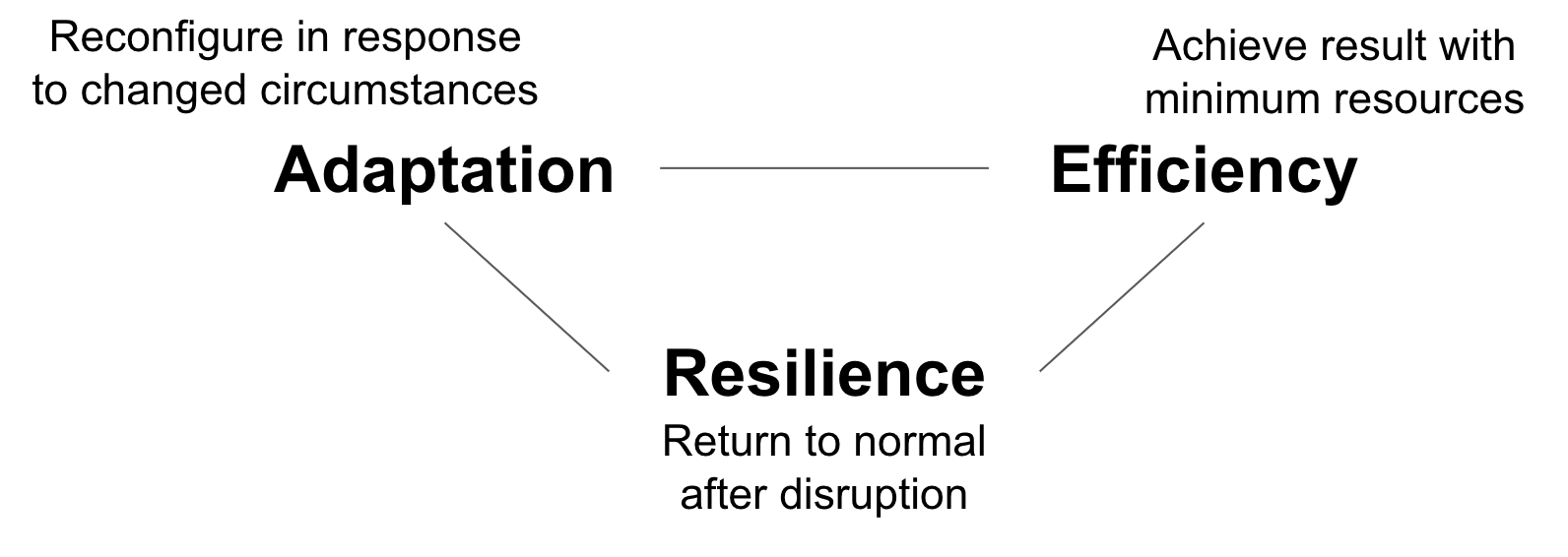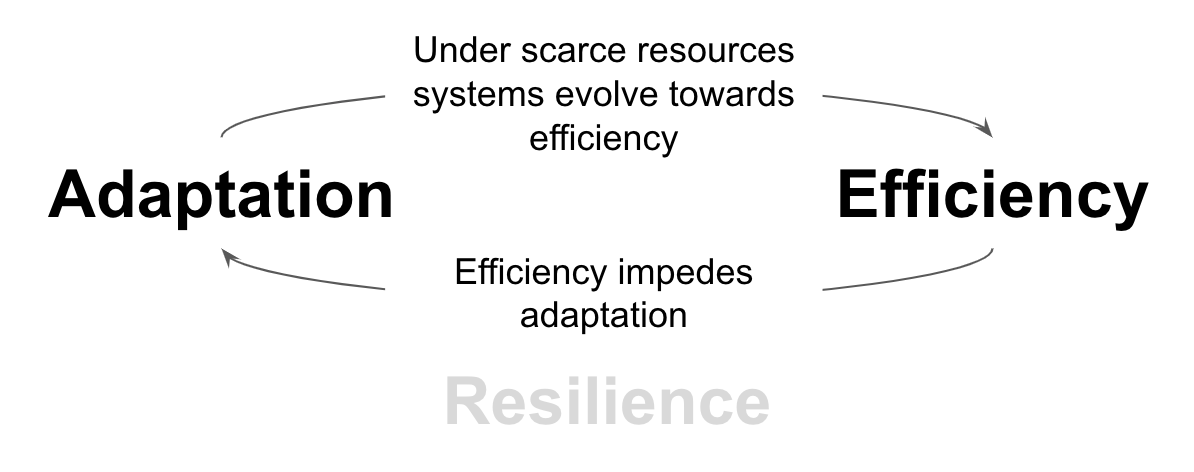Managing the tension between adaptation resilience and efficiency - how skill models evolve
Steven Forth is co-founder and managing partner at Ibbaka. See his skill profile here.
The past few months, from March to May of 2020, have challenged many of us personally and put our organizations under intense stress. Some of us are questioning our basic assumptions about work and our careers. Others are digging in, adopting a survivor mindset, and pushing on. At least a few people I know are simply caught in contradictions, and cannot see a way forward. What is there to learn from all this?
Please take our survey on Mobilizing Talent After Disruption
One conversation that has been cropping up is the tension between ‘resilience’ and ‘adaptation.’ I want to add ‘efficiency’ to this as an obsession with efficiency has, I believe, undermined both resilience and our ability to adapt. Roger Martin wrote about ‘The High Price of Efficiency’ in the Harvard Business Review last year and his comments have been borne out in recent in months. Obsessive efficiency weakens organizations, supply chains and our own ability to grow and manage our careers. Roger has a book on this coming out this fall. When More in not Better.
How do resilience, adaptation and efficiency interact and what does this have to do with skill and competency models? Let’s look at the interactions between these three concepts first and then see what this means for skill management.
When does efficiency matter?
There are reasons for modern management’s obsession with efficiency. In a stable environment, where processes are well defined and outcomes are predictable, efficiency is the winning strategy. One can even argue that efficiency, by building up financial reserves, leads to resilience and provides the resources needed to adapt. Well, maybe.
Before moving on, let’s define terms.
Resilience - the ability of a system to return to normal after a disturbance. Organizations that are able to return to business as usual after the Covid-19 pandemic have high resilience. They can tolerate wide changes in the environment and continue to function. Resilience is based on homeostatic mechanisms and negative feedback (like a thermostat) and requires a certain amount of (inefficient) redundancy. There also need to be multiple ways to achieve the same end. C.S. Holling has done the foundational work here.
Adaptation - the ability of a system to change its structure and behaviours. This is the field of complex adaptive systems. The Santa Fe Institute has led research into area.
Efficiency - the ability to achieve a defined end with a minimum number of resources.
Effectiveness - efficient is not the same as effective. One can efficiently carry out work that has little impact. Our goal is to be both efficient and effective.
In stable environments where goals are clear efficiency is generally the winning strategy. Until it is not. It is rare for new adaptations to emerge from an optimized process. And efficient, optimized systems with minimal inventories and just in time supply chains are fragile things.
Resilience and adaptation generally work in opposite directions. Optimized processes and routine work want the situation to return to normal so they continue to do what they do best. Accepting some redundancy and multiple paths are the price these systems need to pay for resilience. Creative and emergent processes want to adapt. They are trying to evolve. But this also requires redundancy, multiple paths and diversity. Can resilience, adaptation and efficiency be connected. How to square this circle?
Connecting resilience adaptation and efficiency
Let’s look at the paired interactions first, beginning with adaptation and efficiency. There is a bit of a trap happening here. Extremely efficient systems struggle to adapt. But in a world of scarce resources, systems evolve towards efficiency. Most of us have to operate with some resource constraints. These constraints are one of the things that gives a direction to evolution, without constraints of some kind there can be no meaningful adaptation. This is a classic unstable system, where the evolutionary push towards efficiency naturally results in a system that is too brittle to evolve further and breaks apart. That is the natural history of most industries and the companies in them.
The tension between adaptation and efficiency pushes systems towards levels of efficiency that cause them to fail. A similar tension exists between adaptation and resilience. In moderately unstable environments systems adapt towards resilience. Typically resilience is a lower cost strategy than adaptation and conservation of effort favors resilient systems. Of course this only holds so far, in radically unstable environments the pendulum swings away from resilience towards adaptation, but in business such circumstances are rare. There is another feedback loop (not shown in the sketch). Resilient systems interact with other resilient systems to enhance resilience. This is one reason there is some level of stability in our world, without which it would be hard to plan (or have a direction to the changes that occur).
Efficiency and resilience also interact. The stability that resilient systems give pushes adaptation towards efficiency. Over time, this undermines stability as the system of systems becomes less resilient . Change and adaptation surface again.
Sometimes it is an external jolt that destabilizes the environment, tipping the balance away from resilience and efficiency to adaptation. For some of us, this is what is happening with Covid 19.
What does all this have to do with skill and competency management?
A study of the competency models at different organizations suggests that the types of skills that are valued, and receive training investment, are different depending on the relative ascendance of resilience, adaptation and efficiency.
Most of the competency models and skill distributions we see are geared towards efficiency. Perhaps this is because most of the time organizations are trying to increase efficiency, sometimes even at the cost of effectiveness.
Below is the current (May 2020) distribution for Ibbaka (this aggregates the skills of all of the people at Ibbaka). It is rather typical of a company with a diverse business that is only part way on the path towards efficiency.
Efficiency skills
Organizations focussed on efficiency tend to have a lot of Tool skills. These will be supported by some Technical, Design and Business skills but the focus tends to be on the actual tools used to get work done. Foundational skills and Social skills tend to be under represented.
Resilience skills
The skills needed for resilience tend to be Social skills and Foundational skills, but these will be well balanced by Business and Technical skills. Social skills are critical when organizations are under stress. This is one reason we see so many organizations today first looking inwards to make sure their people are all right and then reaching out to their customers, not to sell, but to reassure and to strengthen relationships.
Business skills (perhaps management or even leadership would be a better way to describe the skills needed here) are also important for resilience. In difficult environments, like the one many of us are in now, leadership is at a premium. It is important to set the right priorities and allocate resources so that the organization can flex and then get back to normal.
Japanese design firm Nendo’s elastic cubes are a good metaphor for resilience. They can flex and extend but when the distortion is relaxed they go back to being cubes.
Adaptation skills
Adaptation skills are different from resilience or efficiency skills. If the ‘new normal’ for your organization is going to be fundamentally different from the ‘old normal’ adaptation skills are going to be important to your organization.
The most important adaptation skills are Foundational skills. Foundational skills are the skills used to build new skills.
If your organization has been focused on efficiency, or hunkered down in resilience mode, there is a good chance you have lost touch of your Foundational skills and you are going to need to reconnect with them as part of an adaptation strategy. Just as ‘core values’ help to steer a course through difficult times, Foundational skills are what you need to enable adaptation.
Of course Foundational skills alone are not enough. You will also need Design skills. Design, widely defined, is that allows us to imagine a world different from the world we are currently in and to build toward it.
As one moves from imagination and exploration (important parts of design) to execution, it is critical to be able to connect Design skills to Technical and Business skills. Eventually tools emerge to support work and as efficiency moves back to the fore.
Foundational Skills - Design Skills - Business & Technical Skills - Tool Skills
That is the natural progression of adaptation. The purpose of adaptation is to get back to an environment where resilience and efficiency matter. That is the path many of us are setting out on. It may be a long journey.











